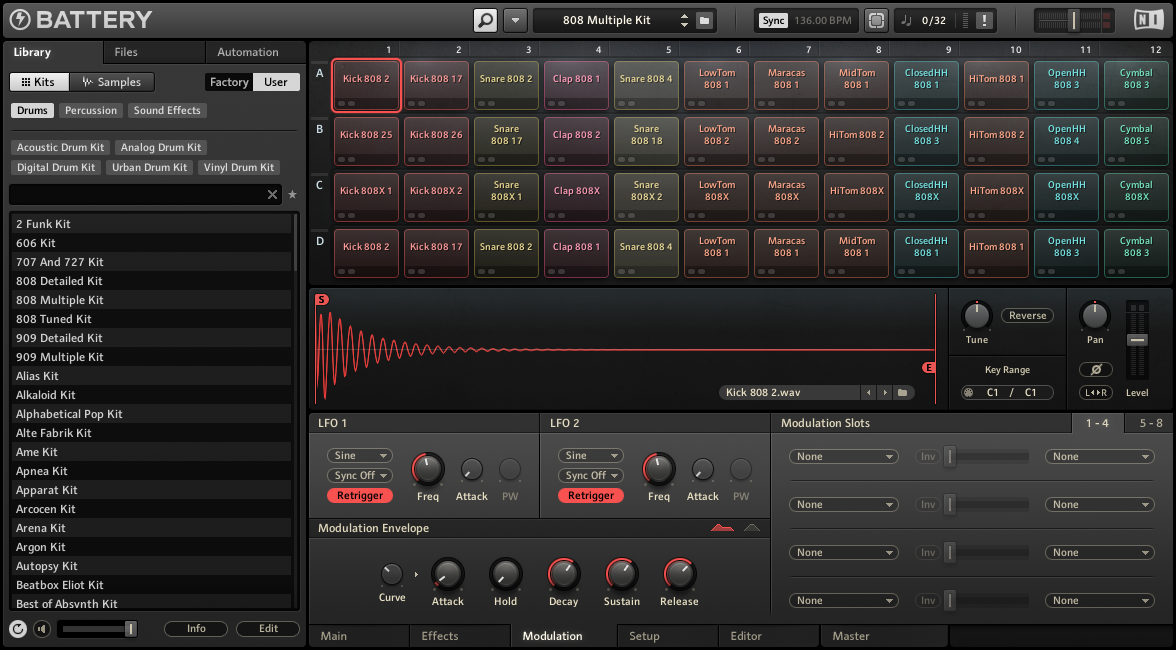



Once you have configured sounds into cells, the giant strides NI have taken in terms of effects processing in recent years make their presence felt here too. The new kits sound great and with the integration options - Battery 4 will accept samples from a wide range of file types - there's no need to stick with NI's own libraries of content because you can so easily expand these with your own. Workflow has been so significantly improved that once you have familiarized yourself with what's new, beat building becomes more fun than ever. Design wise, we're happy to leave the old version's looks firmly in the past. Oodles of optionsĮven though this version has been a long time coming, it's been worth the wait. Brilliantly, the waveform display toggles from LFO or Envelope shapes and the waveform of the sound you're processing as you hover over parameters, which is neat and hugely effective. The Modulation tab offers multiple opportunities to 'interrupt' signal flow with twin LFOs and a dedicated Modulation envelope, and drop down menus let you assign these to the parameters of your choice. Further to the right, the Master tab allows access to sub-grouping Busses, the Reverb and Delay master modules, as well as Global Filter/EQ, Compressor, Limiter, Transient Designer and Saturation modules. The Effects tab opens up more per-cell sonic treatments with Saturation, Lo-Fi, Filter/EQ and Transient Designing modules, as well as a complete set of controls for the Compressor module mentioned earlier. Once you've exhausted these initial sound sculpting tools, you can go under the hood of your cells and overall kit configuration via a series of tabs at the bottom. Overall this makes Battery 4's workflow quicker, though the best development on this front comes from a new tagging system for individual sounds within the plug-in's library.īuilding your own kits used to involve a lot of faff but now Battery 4 contains kit piece names that are further sub-categorised (acoustic, analog, electronic) so that you can audition via Battery's own browser to drag and drop hits into the cells you want them to fit. Velocity can be mapped to Volume or Pitch (or both), while a simple 'dual' filter design lets you scoop out bass and treble from either end of the frequency spectrum at the same time.Įach pad features its own Compressor that keeps things simple on this main page with a basic Amount dial only, while send dials to the Delay and Reverb modules (we'll come to these shortly) lie on the right.

The lower part of the GUI concerns basic modulation possibilities, starting with Volume and Pitch Envelopes for each pad that feature two different Envelope configurations for each.


 0 kommentar(er)
0 kommentar(er)
